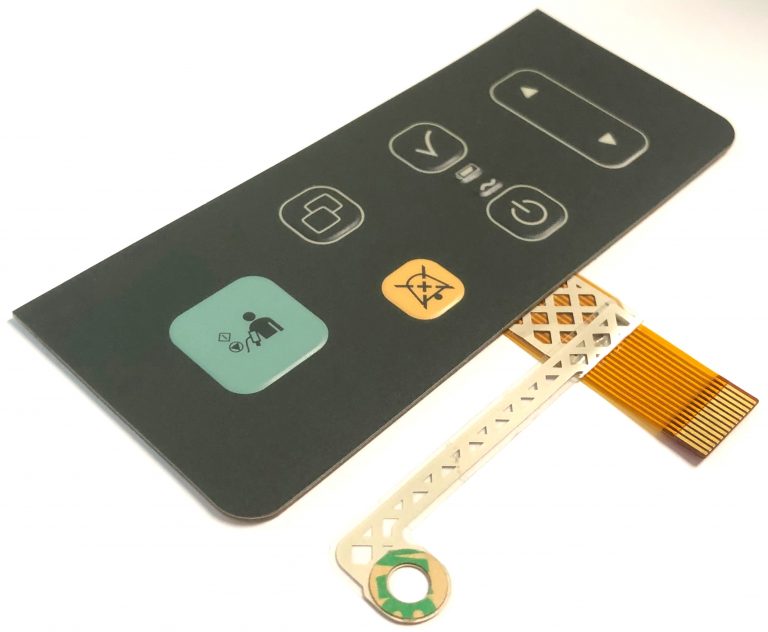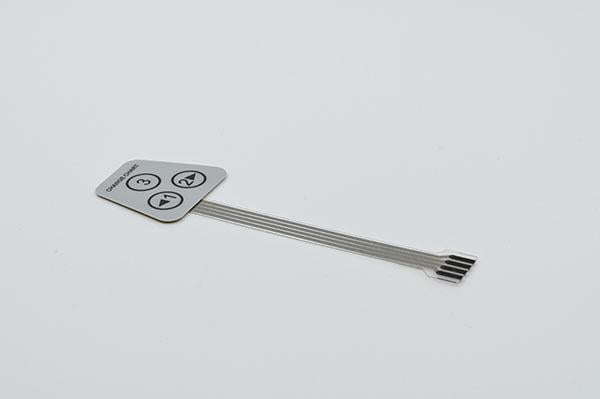All Concerning Membrane Switch Over: Understanding Its Design and Capability
When you believe regarding the control user interfaces in modern-day tools, membrane buttons usually come to mind. These components are much more than just buttons; they blend design and performance perfectly. Understanding how they work and what makes them effective can alter your point of view on daily electronic devices. However, there are subtleties to their style and performance that you may not understand. Let's explore what sets membrane layer switches besides various other control systems.
What Are Membrane Switches?

Membrane layer buttons can also be personalized regarding shape, size, and graphics, enabling manufacturers to develop special interfaces tailored to particular products. Overall, membrane layer switches play a considerable function in improving individual experience throughout a broad array of applications.
Exactly How Membrane Switches Over Work
When you press a key on a membrane layer button, it activates a straightforward yet reliable device. membrane switch manufacturer. The top layer, often made of flexible material, pushes down onto a conductive layer under it.
You'll observe that the tactile feedback differs based upon the button layout, using either a soft click or a much more noticable reaction. As soon as you launch the secret, the membrane returns to its initial placement, reopening the circuit and quiting the signal. This process occurs virtually instantaneously, making certain a responsive individual experience.
Membrane buttons are preferred because of their durability and resistance to dirt and wetness, making them suitable for different applications, from house devices to medical tools. Understanding this procedure helps you value their widespread usage.
Key Components of Membrane Layer Buttons
Comprehending the crucial parts of membrane layer switches is fundamental for understanding their performance and design. The protective layer shields versus ecological factors and put on, expanding the switch's lifespan. By understanding these components, you'll gain insight into exactly how membrane switches operate and their significance in various applications.
Products Used in Membrane Change Layout
The performance and durability of membrane layer switches greatly depend upon the products utilized in their design. You typically run into polyester and polycarbonate as main substratums because of their exceptional strength and adaptability. These materials resist scratches and chemicals, making them suitable for demanding environments.
The conductive layers often use silver or carbon, picked for their reliability and conductivity. membrane switch manufacturer. Silver offers exceptional efficiency, while carbon is an economical alternative. For the overlay, you may take into consideration a matte or shiny finish, depending upon your aesthetic demands and user experience
Make particular to select adhesives that hold up against ecological aspects like temperature level and moisture. Picking the best materials will certainly assure your membrane button stands the examination of time.
Style Considerations for Membrane Layer Switches
While developing membrane buttons, it's important to take into consideration different factors that affect their performance and customer experience. Beginning by more helpful hints concentrating on the design and button size; make sure they're instinctive and simple to navigate. Think about the tactile comments you intend to provide-- will users need a visible click or a softer touch? Furthermore, think concerning the materials you'll make use of, as they'll affect sturdiness and aesthetic appeals.
Do not forget the graphic design; clear labeling and color comparison are significant for exposure. Verify your layout fits environmental variables, like moisture or temperature level variants, which can influence efficiency. Keep in go to my blog mind the value of screening models with real individuals to collect comments and make needed changes. This iterative process assists you fine-tune the design, validating it fulfills both functional and aesthetic requirements effectively. By carefully thinking about these aspects, you'll create a membrane layer button that improves usability and contentment.
Applications of Membrane Layer Buttons
Membrane layer switches are functional components located in various applications, from industrial tools to consumer electronics. You'll see you could try here their impact in equipments that call for sturdy user interfaces and in tools that profit from streamlined styles. Understanding these applications aids you appreciate the functionality and functionality of membrane layer buttons in day-to-day innovation.
Industrial Devices Use
When you're looking to improve the capability of industrial devices, membrane switches offer a reliable service that integrates sturdiness with user-friendly design. These switches are excellent for rough environments, supplying resistance to dust, wetness, and chemicals. Welcome membrane buttons to streamline your operations and boost overall performance.
Customer Electronic Devices Assimilation
In the domain of consumer electronics, membrane layer buttons play an important role in enhancing individual communication and device performance. You'll discover them in tools like microwaves, remotes, and pc gaming consoles, offering a smooth means to communicate with innovation. Their smooth layout allows for easy combination right into numerous items, making controls intuitive and user-friendly. With their capability to integrate graphics and backlighting, you can appreciate a modern-day aesthetic that complements the device's general look. Membrane layer buttons additionally assure durability and resistance to dust and dampness, expanding the life expectancy of your electronics. By picking membrane layer buttons, you enhance not just the performance however likewise the style of your gadgets, making daily communications smooth and satisfying.
Advantages and Downsides of Membrane Buttons
While membrane buttons supply a variety of benefits, they likewise come with some drawbacks that you need to think about. One substantial benefit is their compact design, making them optimal for space-constrained applications.

Nonetheless, there are negative aspects. Membrane buttons can have a much shorter life-span compared to mechanical switches, specifically under hefty use. They can additionally be much less responsive, which might impact customer feedback during procedure. If damaged, fixing them can be difficult and usually needs complete substitute. Eventually, their sensitivity to severe temperature levels and ecological conditions might limit their efficiency in certain setups. Balancing these advantages and disadvantages will aid you identify if membrane layer buttons are the best fit for your project.
Frequently Asked Questions
The Length Of Time Do Membrane Switches Over Normally Last?
Membrane layer changes normally last in between 5 to ten years, depending upon usage and ecological conditions. You'll wish to evaluate elements like wear, exposure to moisture, and temperature fluctuations to assess their longevity properly.
Can Membrane Switches Be Personalized for Particular Styles?
Yes, you can personalize membrane buttons to fit certain designs (membrane switch manufacturer). You'll have the flexibility to select shades, forms, and designs that match your job's requirements, ensuring they mix effortlessly with your total aesthetic
What Is the Price Variety for Membrane Layer Switch Over Manufacturing?
The price array for membrane button manufacturing normally falls in between $1 and $10 per device, depending on variables like layout intricacy, amount, and materials. You can get quotes from makers to locate the most effective choice.

Are Membrane Switches Over Waterproof or Resistant?
Membrane switches can be designed to be water resistant or resistant, depending upon materials made use of and construction methods. If you require them for damp atmospheres, ensure you define those requirements throughout the design procedure.
Just How Do Membrane Switches Compare to Traditional Buttons?
Membrane layer buttons are usually thinner and a lot more flexible than traditional switches, providing a sleek style. They're usually easier to clean up and integrate, but could not offer the responsive responses you're used to with mechanical alternatives.
Verdict
